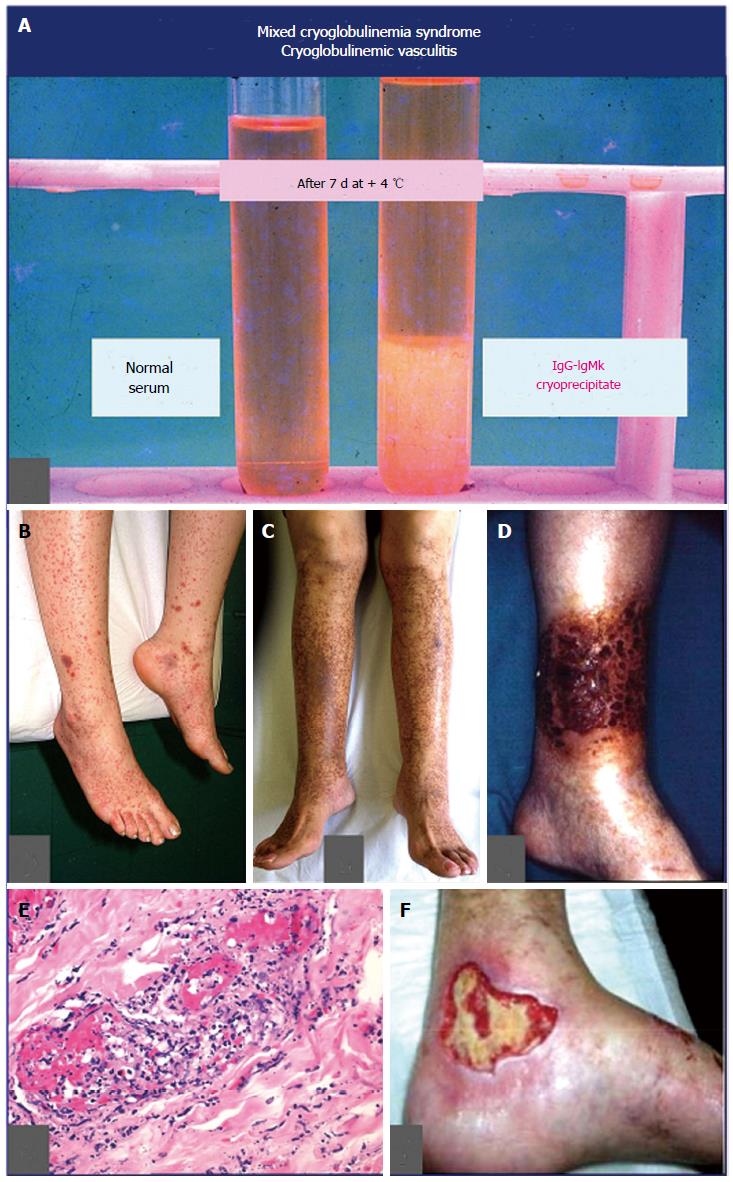Copyright
©The Author(s) 2015.
World J Hepatol. Mar 27, 2015; 7(3): 327-343
Published online Mar 27, 2015. doi: 10.4254/wjh.v7.i3.327
Published online Mar 27, 2015. doi: 10.4254/wjh.v7.i3.327
Figure 4 The main serological, clinical, and pathological hallmarks of mixed cryoglobulinemia syndrome, or cryoglobulinemic vasculitis: A: On the right serum cryoprecipitate (evaluated after 7 d storage at 4 °C) composed by polyclonal IgG (autoantigen) and monoclonal IgMk (autoantibody) immune-complexes, compared to normal serum sample; B: Recent onset, palpable purpuric lesions of the lower limbs; C: Sock-like ochraceous hyperpigmentation of the legs and feet, consequence of repeated episodes of purpura; D: Severe, necrotizing vasculitic skin lesion of the leg; E: Typical histological pattern of cutaneous leukocytoclastic vasculitis involving the small vessels and characterized by diffuse fibrinoid necrosis and disintegrated neutrophil permeation of the vessel walls; F: Wide non-healing skin ulcer, often resistant to treatment.
- Citation: Ferri C, Sebastiani M, Giuggioli D, Colaci M, Fallahi P, Piluso A, Antonelli A, Zignego AL. Hepatitis C virus syndrome: A constellation of organ- and non-organ specific autoimmune disorders, B-cell non-Hodgkin’s lymphoma, and cancer. World J Hepatol 2015; 7(3): 327-343
- URL: https://www.wjgnet.com/1948-5182/full/v7/i3/327.htm
- DOI: https://dx.doi.org/10.4254/wjh.v7.i3.327









